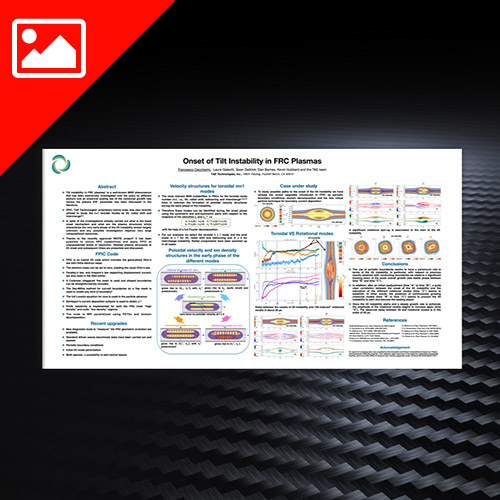
Apr 2019 | Research Library, Papers, Fusion Energy, Fusion Research, Fusion Science, Fusion Technology, Instabilities, Plasma Research, Simulation
April 2019 | J. Bao | Physics of Plasmas | Paper
Global properties of drift waves in the beam driven FRC, the C2-U device, in which the cen- tral FRC and its SOL plasma are connected with the formation sections and divertors.

Mar 2019 | Research Library, Papers, Experiment, Fast Particles, Featured Publications, Fusion Energy, Fusion Research, Fusion Science, Fusion Technology, Instabilities, Plasma Research, Top Level
March 2019 | R.M. Magee | Nature Physics | Paper
Efficiently heating a magnetically confined plasma to thermonuclear temperatures remains a central issue in fusion energy research. One well-established technique is to inject beams of neutral particles into the plasma, a process known as neutral beam injection.

Nov 2018 | Research Library, Posters, Equilibrium, Fusion Energy, Fusion Research, Fusion Science, Fusion Technology, Instabilities, Plasma Research, Simulation
October 2018 | F. Ceccherini | APS-DPP | Poster
Tilt instability in FRC plasmas1 is a well-known MHD phenomenon that has been extensively investigated over the years by different authors and an empirical scaling law

Oct 2018 | Research Library, Papers, Diagnostics, Fusion Energy, Fusion Research, Fusion Science, Fusion Technology, Instabilities, Modeling, Plasma Research, Theory, Top Level
October 2018 | B. Deng | Nuclear Fusion | Paper
In modern F experiments at TAE Technologies, classical FRC instabilities are suppressed
by advanced neutral beam injection and edge biasing methods, leading to high plasma confinement and fast ion pressure built-up which is comparable to the bulk plasma pressure.

Oct 2018 | Research Library, Papers, Experiment, Fast Particles, Fusion Energy, Fusion Research, Fusion Science, Fusion Technology, Instabilities, Plasma Research, Turbulence
June 2018 | R.M. Magee | Nuclear Fusion | Paper
High power neutral beam injection into the C-2U advanced field-reversed configuration (FRC) stimulates at least three distinct energetic particle modes, none of which have been linked to
a performance limitation. Here we present an experimental characterization of one mode in particular, a high frequency mode ( f > fci ) observed in the decaying phase of the FRC.

Feb 2018 | Research Library, Papers, Experiment, Featured Publications, Fusion Energy, Fusion Research, Fusion Science, Fusion Technology, Instabilities, Plasma Profiles, Plasma Research, Stability
February 2018 | J.A. Romero | Nature Communications | Paper
Active control of field reversed configuration (FRC) devices requires a method to determine the flux surface geometry and dynamic properties of the plasma during both transient and steady-state conditions.




